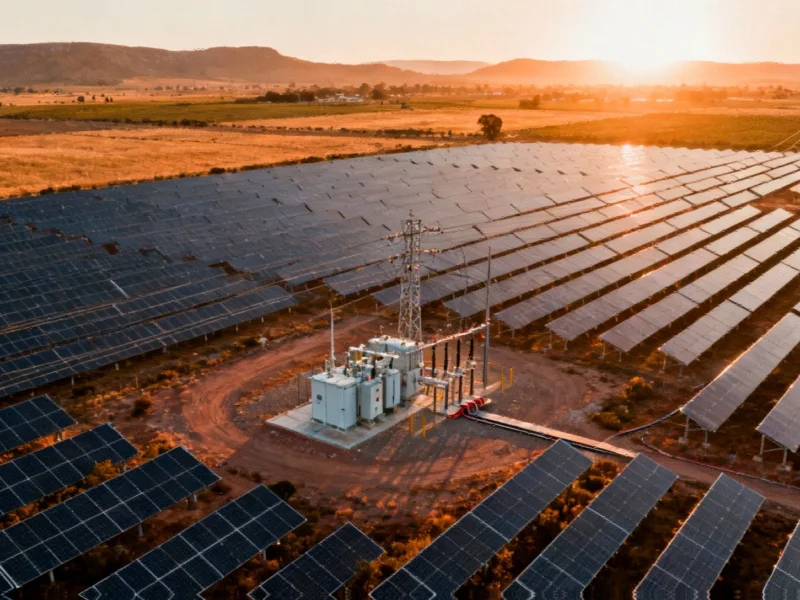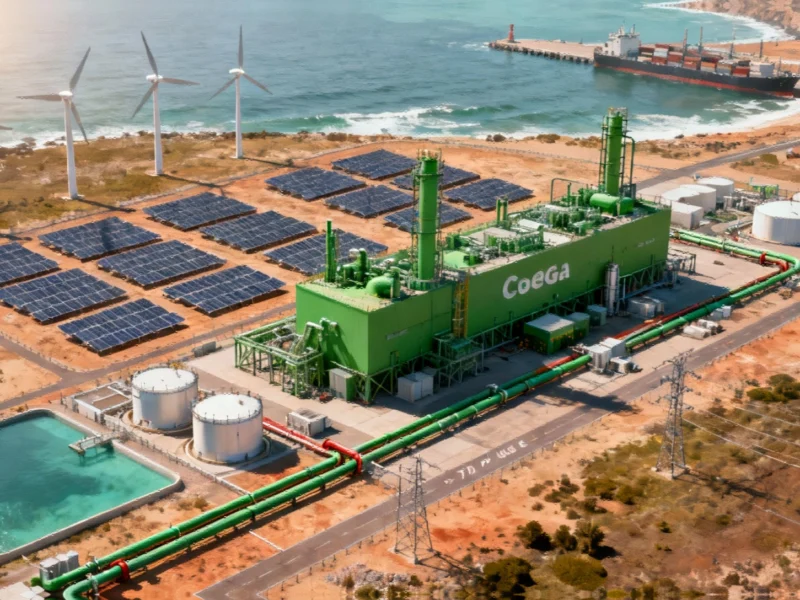Note: Featured image is for illustrative purposes only and does not represent any specific product, service, or entity mentioned in this article.
Record-Setting Thermal Storage System Enters Commercial Operation
California’s Rondo Energy has successfully deployed what it claims is the world’s largest industrial heat battery, marking a significant milestone in renewable energy integration for heavy industry. The 100-MWh Rondo Heat Battery (RHB) system is now in daily automatic operation at an enhanced oil recovery facility operated by Holmes Western Oil Corp in Kern County, California.
The breakthrough system combines a 20-MW solar photovoltaic array with Rondo’s innovative thermal storage technology, replacing one of the facility’s natural gas-fired boilers. According to the company, the installation represents a new paradigm for industrial heat generation, achieving unprecedented scale and efficiency while dramatically reducing carbon emissions.
How the Revolutionary Heat Battery Works
Unlike conventional energy storage systems that store electricity in chemical batteries, Rondo’s technology uses electricity to heat specially designed clay bricks to temperatures exceeding 1,000°C. This stored thermal energy then generates high-pressure steam that can be used for industrial processes. The system achieves remarkable round-trip efficiency exceeding 97%, significantly higher than most electrical storage alternatives.
“The Rondo Heat Battery is now proven at industrial scale,” said Eric Trusiewicz, CEO of Rondo Energy. “We are already developing and operating heat batteries across four continents and five industries. Our customers are improving their competitiveness and slashing their carbon emissions at the same time.”
Economic and Environmental Advantages
The system’s operational benefits extend beyond emissions reduction. By charging during daylight hours using off-grid solar power and delivering heat 24/7, the technology provides manufacturers with stable energy costs while reducing exposure to volatile energy markets. The project demonstrates how industrial operations can maintain reliability while transitioning to renewable energy sources.
Industrial heat accounts for approximately 25% of global final energy consumption, with sectors ranging from chemicals to cement relying on high-temperature processes. Rondo’s approach offers a practical pathway for these energy-intensive industries to decarbonize without compromising operational requirements or economic viability.
Broader Industry Implications
The successful deployment comes amid significant industry developments in energy transition technologies. Andy Lubershane, partner at Energy Impact Partners, emphasized the system’s potential impact: “The commercialization of the heat battery represents yet another global inflection point for solar and wind power. Just as electric vehicles opened up the transport market to renewable electricity, heat batteries will open up an even larger new market.”
The technology’s simplicity contributes to its scalability and safety. Using only brick and wire as storage media, the system eliminates fire, explosion, and toxic leak risks associated with some energy storage technologies. This characteristic, combined with the absence of emissions, means the Rondo Heat Battery requires no air permits, significantly streamlining deployment.
Integration and Future Applications
One of the system’s key advantages is its seamless integration with existing industrial infrastructure. The heat battery delivers steam alongside conventional gas-fired boilers without requiring facility modifications, operating through standard steam flanges at pressures exceeding 100 bar (1,450+ PSI).
As companies navigate market trends toward sustainability, technologies like Rondo’s heat battery provide practical solutions for reducing Scope 1 emissions. The system’s ability to utilize low-cost, intermittent electricity—whether from dedicated solar arrays or grid power during surplus periods—positions it well within evolving energy markets.
Rondo is currently developing and operating projects across North America, Europe, Asia, and Australia, with deployments underway in chemicals, biofuels, food and beverage, and cement industries. The technology’s reliance on abundant materials and proven industrial components enables rapid scaling without dependence on scarce minerals.
Technical Performance and Reliability
After 10 weeks of operation, the Kern County installation has achieved all performance, efficiency, and reliability milestones. The system’s 100-MWh capacity delivers thermal energy equivalent to approximately 10,000 residential heating systems, setting new benchmarks for industrial-scale thermal storage.
The project’s success demonstrates how recent technology innovations can overcome previous limitations in renewable energy integration. Unlike heat pumps or electric boilers that require constant power, the Rondo Heat Battery charges during specific low-cost periods, making it compatible with the intermittent nature of solar and wind generation.
As the energy sector continues to evolve, this deployment represents a significant step toward decarbonizing industrial processes that have traditionally relied on fossil fuels. The technology’s performance at the Holmes Western Oil facility suggests substantial potential for broader adoption across energy-intensive industries seeking to reduce both costs and environmental impact.
The development occurs alongside other significant related innovations in clean technology and industrial automation, highlighting the accelerating pace of transformation across multiple sectors. As manufacturers face increasing pressure to reduce emissions while maintaining competitiveness, solutions like the Rondo Heat Battery offer a compelling pathway forward.
This article aggregates information from publicly available sources. All trademarks and copyrights belong to their respective owners.



